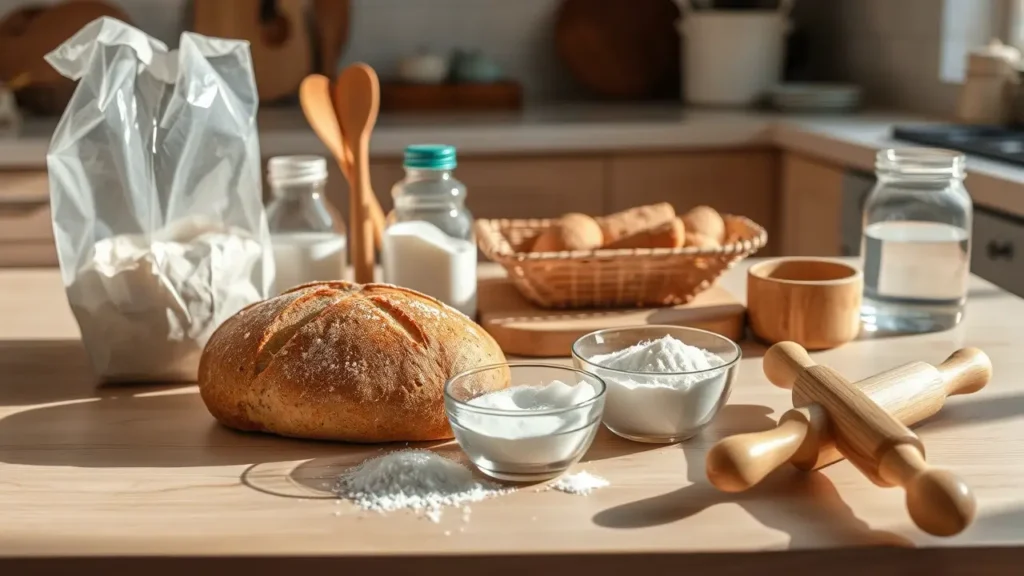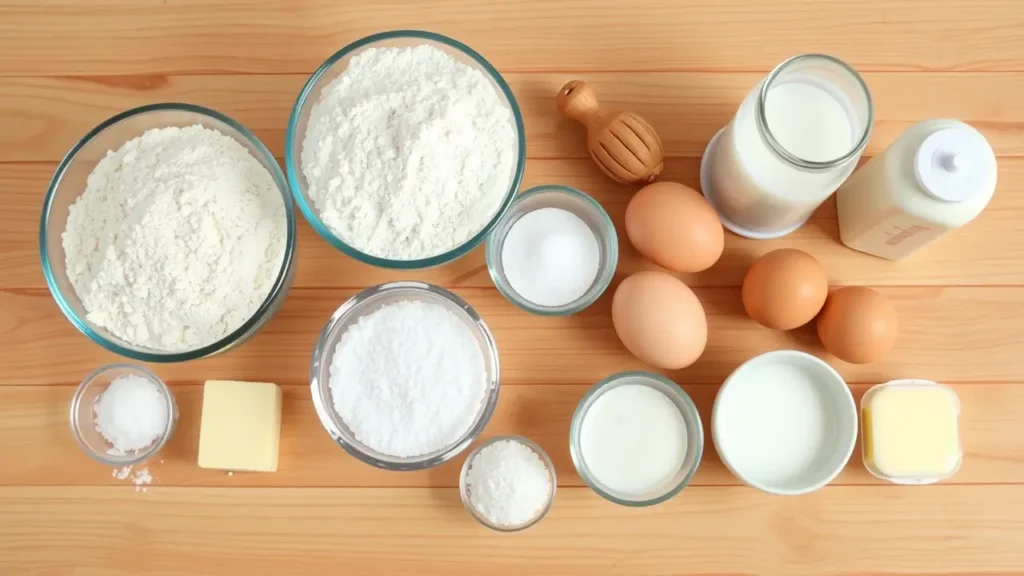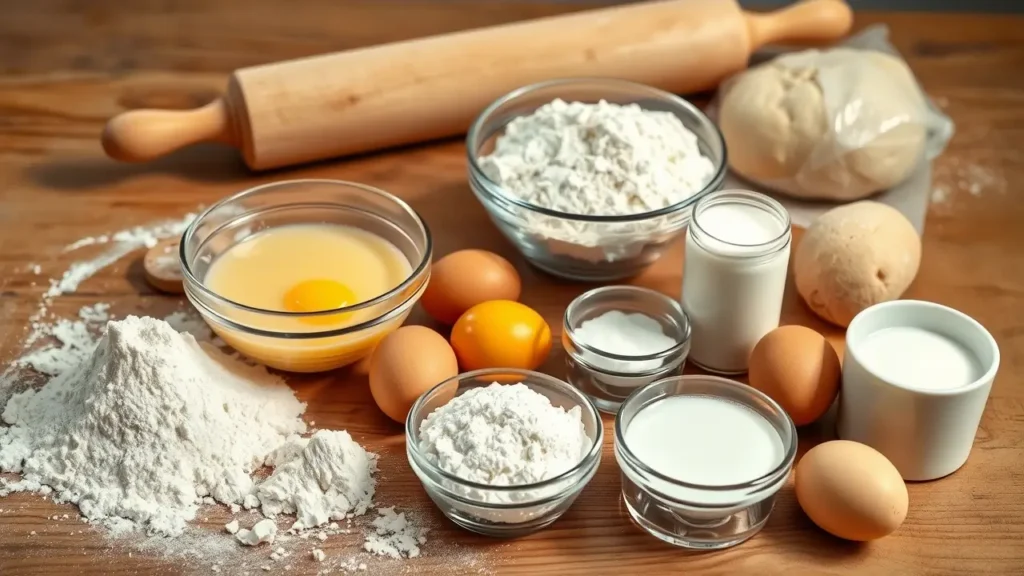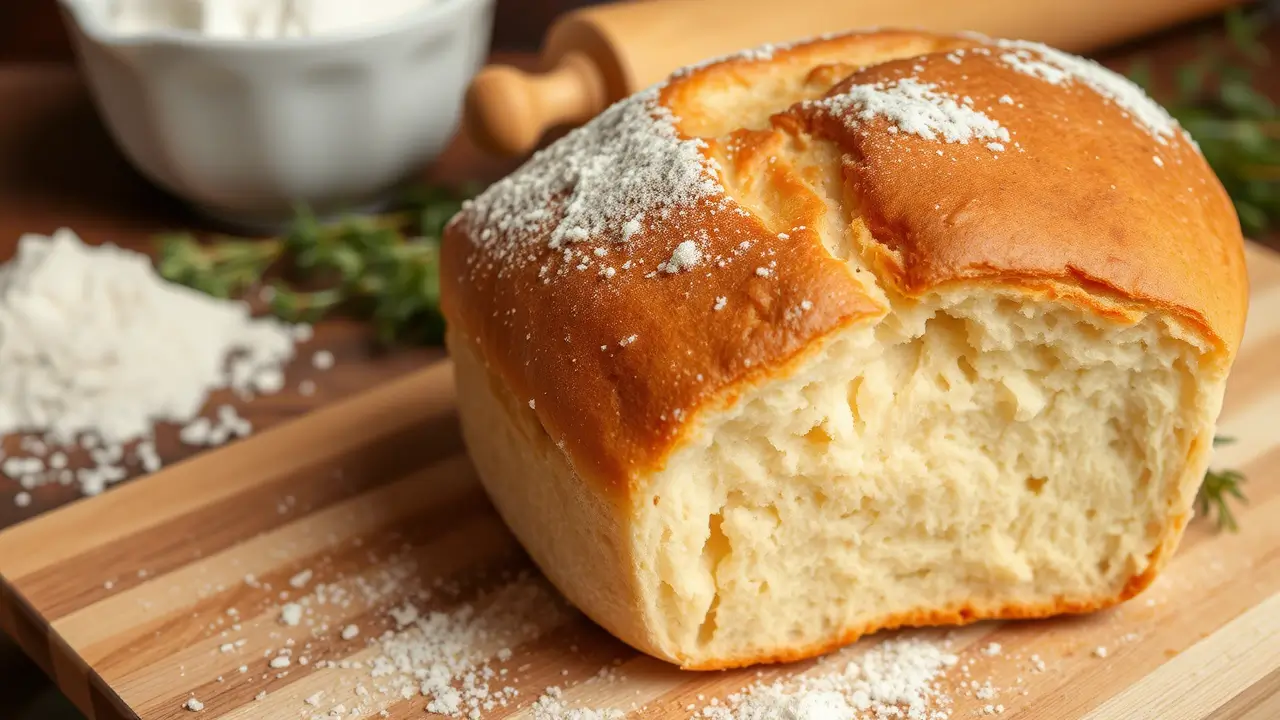What is a bread recipe? At its heart, a bread recipe is a blueprint for transforming simple ingredients, flour, water, yeast, and a pinch of magic, into something truly wonderful: a warm, crusty loaf of bread. Forget the complicated, intimidating recipes you might have encountered. This bread recipe is different. It’s the kind of recipe that fills your kitchen with the comforting aroma of baking bread, a scent that evokes feelings of warmth, family, and pure deliciousness. It’s a recipe that boasts a wonderfully soft interior, a satisfyingly crisp crust, and a taste that’s both simple and deeply satisfying.
I remember my grandmother’s kitchen, filled with the rhythmic thud of her kneading dough and the comforting warmth of the oven. Her bread, slightly rustic, utterly irresistible, was the centerpiece of countless family gatherings. This recipe is my attempt to capture that same magic, a simpler version perfect for busy modern lives. It’s about creating something beautiful and delicious without spending hours in the kitchen. It’s quick, it’s easy, and the results are undeniably impressive, the kind of bread that disappears almost instantly.
This isn’t your average recipe; it’s a gateway to homemade goodness. This recipe offers a taste of home-baked joy without the fuss and frustration that can often accompany bread making. It’s so simple, even baking beginners will find success, and the result is a loaf so delicious, it’ll become a family favorite in no time. Imagine the smiles around your table as you slice into this warm, golden loaf, the perfect accompaniment to your favorite soup, stew, or simply slathered with butter.
Discover why gluten-free pancakes are breaking the mold and proving to be better than ever! Fluffy, delicious, and perfect for everyone, these recipes will change the way you think about gluten-free baking. Click here to learn more and start your morning right!
If you’re looking for a recipe that’s both satisfying and simple, look no further. This recipe, unlike some of the more complex pastries on our blog (like our award-winning croissant recipe!), is designed for ease and maximum flavor. Get ready to embark on a baking adventure that’s as rewarding as it is delicious!
What is this bread recipe called?

Now, you might be wondering, what’s the official name of this incredibly delicious bread? Well, that’s a great question! I mean, could it be “Grandma’s Secret Simple Loaf”? Or perhaps “The Effortlessly Delicious Everyday Bread”? Maybe even “The Knead-to-Know Bread Recipe”? The truth is, it doesn’t have a fancy, complicated name. It’s simply called “Simple Everyday Bread”. Why? Because that’s exactly what it is: a simple, delicious, everyday loaf that’s perfect for any occasion.
I called it this after a rather messy (and floury) baking experiment where I nearly gave up, but persevered to create this wonderful recipe. As they say, the way to a man’s heart is through his stomach, and this bread certainly wins hearts! Ready to bake a loaf that’s as easy as its name suggests? Let’s get started!
Why This Simple Everyday Bread Recipe is a Kitchen Staple
There’s something truly magical about pulling a warm loaf of bread from the oven, golden on the outside, soft and fragrant on the inside. This Simple Everyday Bread recipe isn’t just easy to make; it’s a true crowd-pleaser that deserves a permanent spot in your baking rotation. Here’s why this humble loaf stands out from the rest:
The Perfect Texture You’ll Love
The first bite says it all, this bread boasts a soft, fluffy crumb that’s light yet satisfying, with a delicate balance between tenderness and structure. It’s the kind of bread that practically melts in your mouth, with a pillowy texture that makes every sandwich, toast, or buttered slice feel like a treat. And let’s not forget the crust, golden, slightly crisp, and full of baked-to-perfection appeal.
Unlike many store-bought loaves filled with preservatives and artificial softeners, this homemade version delivers real flavor and genuine texture , made with just a handful of wholesome ingredients.
A Budget-Friendly Bakery Essential
Let’s talk savings — while a single loaf from the grocery store might seem affordable, the cost adds up quickly when you’re feeding a family or enjoying fresh bread regularly. Making your own bread at home is not only more economical in the long run but also lets you control exactly what goes into your food . No hidden additives, no artificial flavors, just simple, nourishing ingredients you can trust.
It’s a smart, sustainable way to enjoy bakery-quality bread any day of the week without breaking the bank.
Endless Flavor Possibilities
One of the best things about this recipe is how incredibly customizable it is! Whether you’re craving savory, sweet, nutty, or herbaceous notes, this versatile dough welcomes creativity with open arms:
- Add sun-dried tomatoes and rosemary for a Mediterranean-inspired twist.
- Stir in whole wheat flour or oats for a heartier, more rustic loaf.
- Mix in seeds like pumpkin, sunflower, or poppy for added crunch and nutrition.
- Or keep it classic with nothing more than a sprinkle of sea salt on top.
This is the kind of recipe that invites you to play, experiment, and make it your own, every time you bake it, it can be something new.
A Simpler Alternative to Sourdough
If you’ve ever tried sourdough, you know it requires patience, planning, and a living starter. While the results are undeniably delicious, not everyone has the time or inclination to commit to a multi-day process. That’s where this no-fuss, everyday bread shines, it delivers incredible flavor and texture without the complexity , giving you a beautiful loaf in just a few hours.
It’s the perfect gateway for beginner bakers or anyone who wants to enjoy homemade bread without the hassle .
So whether you’re making it for sandwiches, toast, dinner rolls, or just because, this Simple Everyday Bread is sure to become a beloved favorite in your kitchen.
How to Make Simple Everyday Bread
Quick Overview
This homemade bread recipe is all about simplicity, speed, and seriously delicious results, making it ideal for busy weeknights when you want fresh, warm bread without the hassle. It uses a no-knead method , so there’s no need to spend time working the dough by hand or with a mixer.
Despite its easy approach, this recipe delivers a beautifully soft crumb , a crispy golden crust , and a rich, flavorful bite that rivals any artisan loaf, all in under two hours , including proofing time.
Perfect for sandwiches, toast, garlic bread, or simply enjoyed warm from the oven with a pat of butter , this versatile bread brings a touch of homemade goodness to your table, without the stress.
Whether you’re new to baking or just short on time, this recipe proves that fresh-baked bread can fit into even the busiest routine .
Key Ingredients for Simple Everyday Bread:

- 3 cups (375g) all-purpose flour, plus extra for dusting
- 1 teaspoon (4g) active dry yeast
- 1 teaspoon (6g) salt
- 1 tablespoon (12g) granulated sugar
- 1 1/4 cups (300ml) warm water (around 105-115°F)
- 1 tablespoon olive oil (optional)
- Sesame seeds, poppy seeds, or other seeds (optional)
Step-by-Step Instructions:
Activate the Yeast: In a large bowl, combine the warm water, sugar, and yeast. Let it stand for 5-10 minutes until foamy. This ensures your yeast is alive and ready to work its magic!
Combine Wet and Dry Ingredients: Add the salt and olive oil (if using) to the yeast mixture. Gradually add the flour, mixing with a wooden spoon or spatula until a shaggy dough forms.
Knead the Dough (Optional): While this recipe works well without kneading, for a slightly chewier loaf, you can knead the dough on a lightly floured surface for 5-7 minutes until it becomes smooth and elastic.
First Rise: Lightly grease a large bowl. Place the dough in the bowl, turning to coat. Cover the bowl with plastic wrap and let it rise in a warm place for about 1 hour, or until doubled in size.
Shape the Loaf: Gently punch down the dough to release the air. Shape it into a round or oval loaf.
Second Rise: Place the shaped loaf in a greased 9×5 inch loaf pan or on a baking sheet lined with parchment paper. Cover loosely with plastic wrap and let it rise for another 30-45 minutes, or until almost doubled.
Preheat and Bake: Preheat your oven to 375°F (190°C). If desired, brush the top of the loaf with a little water or milk and sprinkle with seeds.
Bake: Bake for 30-35 minutes, or until the loaf is golden brown and sounds hollow when tapped on the bottom.
Cool: Remove the loaf from the oven and let it cool completely on a wire rack before slicing and serving. This allows the crumb to set properly.
What to Serve Simple Everyday Bread With:
One of the best things about this soft, no-knead bread is just how incredibly versatile it is. Whether you’re enjoying a cozy dinner for one or feeding the whole family, this homemade loaf pairs beautifully with a wide variety of dishes — making every meal feel just a little more special.
Perfect with Hearty Soups & Stews
Serve slices of warm bread alongside your favorite soup, chili, or stew for a comforting, satisfying meal. It’s ideal for dipping into rich tomato soup, creamy broccoli cheese, or a hearty lentil stew.
Great for Toasted Treats
Slice it, toast it, and top it with butter, avocado, jam, or hummus for a quick snack or light lunch. Its soft texture and mild flavor make it the perfect base for both sweet and savory toppings.
A Fresh Pairing
For a lighter option, enjoy it with a fresh green salad tossed in a zesty vinaigrette . The crispness and acidity of the salad balance the warmth and heartiness of the bread perfectly.
The Perfect Beverage Match
Whether you’re going classic or creative, don’t forget the drink! A glass of chilled milk, herbal tea, or even a crisp white wine enhances the flavors and rounds out the experience beautifully.
From casual weeknight dinners to weekend brunches, this bread brings a touch of homemade charm to any table, proving that simplicity can be absolutely delicious.
Top Tips for Perfecting Simple Everyday Bread:

Achieving bakery-quality bread at home is all about technique and attention to detail. Here are some key tips to help you bake a loaf that turns out soft, flavorful, and perfectly textured every time.
Water Temperature Matters
To activate the yeast properly, make sure your water is between 105–115°F (40–46°C) .
- If it’s too hot , you risk killing the yeast, which means your dough won’t rise.
- If it’s too cold , the yeast becomes sluggish, significantly slowing down the proofing process.
A warm touch test: If it feels slightly warmer than body temperature but not hot, you’re in the right range.
Choose the Right Flour
While all-purpose flour works great for this no-knead recipe, feel free to experiment:
- Bread flour will give you a chewier texture and better rise.
- Whole wheat flour adds a nutty flavor and denser crumb — ideal for heartier sandwiches.
Keep in mind that different flours absorb water differently, so adjust the amount of liquid as needed to reach a soft, slightly sticky dough.
Don’t Overknead
If you’re hand-kneading or using a stand mixer, stop once the dough becomes smooth, elastic, and slightly tacky . Overworking the dough can develop too much gluten, leading to a tough, dense loaf.
Watch Your Proofing Time
The rising time can vary depending on the temperature and humidity in your kitchen:
- In a warm environment , the dough may rise in 30–60 minutes.
- In a cooler space , it might take closer to 2 hours or more.
Be patient, good things come to those who wait!
Baking Tips for a Golden Crust
Every oven behaves a little differently, so keep an eye on your loaf during baking:
Adjust the baking time as needed, typically around 30–35 minutes at 375°F (190°C), but check early if you’re using a smaller loaf pan or convection setting.
The bread should be golden brown and sound hollow when tapped on the bottom.
If the crust is browning too quickly, tent it loosely with aluminum foil to prevent burning.
Storing and Reheating Tips:
Enjoy your homemade bread even after baking day with these easy storage and reheating tips that help maintain its soft texture and fresh flavor.
Room Temperature Storage
For short-term freshness (up to 3 days ), store leftover bread in an airtight container or wrap it tightly in a clean kitchen towel or plastic wrap. This helps retain moisture while preventing the crust from becoming too hard.
Freezing Instructions
To keep your bread fresh for longer, freeze it :
- Allow the loaf to cool completely.
- Wrap it tightly in plastic wrap , then add a layer of aluminum foil or place it in a freezer-safe bag to prevent freezer burn.
- Label with the date and freeze for up to 3 months .
Reheating Tips
Revive your bread and enjoy it as if it’s freshly baked:
- Toaster: For individual slices, simply toast them until warm and crispy on the outside, yet soft on the inside.
- Oven: For whole or partial loaves, wrap in foil and warm in a preheated 300°F (150°C) oven for 10–15 minutes, or until heated through. This method restores that just-baked warmth and aroma beautifully.
With these simple tricks, you can enjoy your homemade bread any day of the week, without sacrificing flavor or texture!
Looking for a versatile and easy Quick Bread Recipe that works for any flavor you crave? From sweet banana to zesty lemon, this guide from The Stay At Home Chef has got you covered. Get the recipe here and whip up a delicious loaf in no time!
Frequently Asked Questions (FAQ)
Have questions about making this Simple Everyday Bread? You’re not alone! Here are some of the most commonly asked questions to help you bake with confidence and get great results every time.
1. Can I use instant yeast instead of active dry yeast?
Yes! Instant yeast can be used in place of active dry yeast, and it doesn’t need to be proofed first. Simply mix it directly into the dry ingredients. The rise time may be slightly shorter as well.
2. Why didn’t my dough rise?
There are a few possible reasons:
- Yeast is expired or inactive, Always check the expiration date and ensure your water is between 105–115°F (40–46°C) when activating.
- Cold environment, Dough needs warmth to rise properly. Try placing it in a slightly warmed oven (turned off), near a warm appliance, or in a draft-free area.
- Old or improperly stored flour, Make sure your flour is fresh and stored correctly.
3. Can I make this bread gluten-free?
Yes, but results may vary. Use a high-quality gluten-free all-purpose flour blend designed for baking yeast breads. You may also need to adjust hydration and rising time. Adding xanthan gum (if not already in the flour) can help with structure.
4. How do I know when the bread is fully baked?
The bread should be golden brown and sound hollow when tapped on the bottom . For accuracy, use an instant-read thermometer, the internal temperature should reach 190–200°F (88–93°C) .
5. Can I add herbs, cheese, or other mix-ins?
Absolutely! This basic loaf is a fantastic base for customization. Stir in:
- Fresh or dried herbs like rosemary, thyme, or oregano
- Grated cheese such as Parmesan or cheddar
- Seeds like sunflower, pumpkin, or flax
- Just keep in mind that heavy or wet additions may affect the rise and texture slightly.
6. Can I double the recipe?
Yes, you can easily double the ingredients to make two loaves at once. Be sure to divide the dough evenly and monitor baking time, larger or multiple loaves may require a few extra minutes in the oven.
7. What if I don’t have a loaf pan?
You can bake the bread on a baking sheet or in a Dutch oven for a more artisan-style result. Shape the dough into a round boule or oval, let it rise on parchment paper, then transfer carefully to your baking vessel.
8. Is it okay to refrigerate the dough for a longer rise?
Yes! A slow, cold ferment in the refrigerator (for up to 24 hours) can actually enhance flavor development and improve texture. Just let the dough come close to room temperature before baking.
Still have questions? Leave them in the comments below, we’re always happy to help!
Did You Try Our Recipe?
There are no reviews yet. Be the first one to write one.

